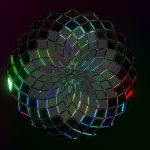If you’ve been following my series of the eight limbs of yoga, you may be aware that I’m rather fond of a good analogy. This article is no different, as we venture into the ever-subtler aspects! Limb six was dharana (concentration), and our seventh limb of dhyana develops our practice further from there.
The analogy I used for dharana in the previous article was of concentrating the mind on one point, much as you would aim to hit a dartboard if you’re just starting to play darts. You’re not even aiming for the inner circles at this stage. So yes, you guessed it, in dhyana you’re starting to inch ever closer to the bull’s eye.
Now as a student and teacher of these limbs myself, it’s been relatively easy for me to discuss all the limbs up to here. But from this point I’m having to rely on the great teachers of yoga to paint the picture for you.
Go With The Flow
Let’s say we’re on this journey to taming the monkey-mind. We start where we struggle to control our thoughts, the speed, frequency and quality. We could say our thoughts are like raindrops falling from the sky. The drops are separate, there are many of them and they’re falling fast. Let’s say that this is dharana.
Next, the drops fall into a river. The thoughts are more cohesive, and the practice of concentration has created some sense of control. The drops are not separate anymore, and they’re following the flow of the river. The flow may be fast or slow, depending on the river. There is a container, a flow, and a direction. Let’s say that this is dhyana.
The Stream Of Concentration
The scriptures call dhyana a continuous flow – it doesn’t break. At this stage the meditator has established a steady stream of concentration on the object. It has been said that you don’t do dhyana, it just happens. Swami Satchidananda says that this is a stage which develops after long practice of dharana.
He goes on to describe how to know if this stage has happened:
- You lose track of time — For example, you aim to meditate for an hour, and when your alarm goes off, you have no idea how the time passed so quickly.
- You lose track of space — You forget where you are, and may even have a sense of not knowing where you are.
- You experience a sense of lightness in the body.
Drawing The Attention Inwards
Swami Vivekananda once gave an explanation which gives some more clues as to what dhyana is:
When one has so intensified the power of of dhyana as to be able to reject the external part of perception, and remain meditating only on the internal part.
Huh?
He means that you begin by concentrating on an object, and then you move on to dwell only on the internal perception of that object, and then come to observe the mind’s reaction. For example, you are concentrating on an image. There is a nerve motion which carries the image to the mind. Then there is a reaction from the mind, supported by flashes of knowledge of the object. In our everyday thinking, these have become mixed up and indistinct, and this process helps us distinguish where between them. Now we have a real chance of finding out where our perceptions come from.
It’s important to remember here that the Sanskrit language has many more specific words around the subject of concentration and meditation than English, so translations can never be completely accurate. For this reason the analogies and explanations from the great teachers are so important.
Focus on Dhyana
I think in this case, rather than racking your brains to try to understand dhyana, it’s one of those things where you just have to start somewhere and persevere. If you follow the instructions starting right from the first of the eight limbs, you’ll realise this is simply a step-by-step process which has been set out for us. Listen to lectures and read the books of the great teachers. Go to a meditation class, or even download one of the many meditation apps that are out there. Keep going until your practice develops a flow of it’s own.













